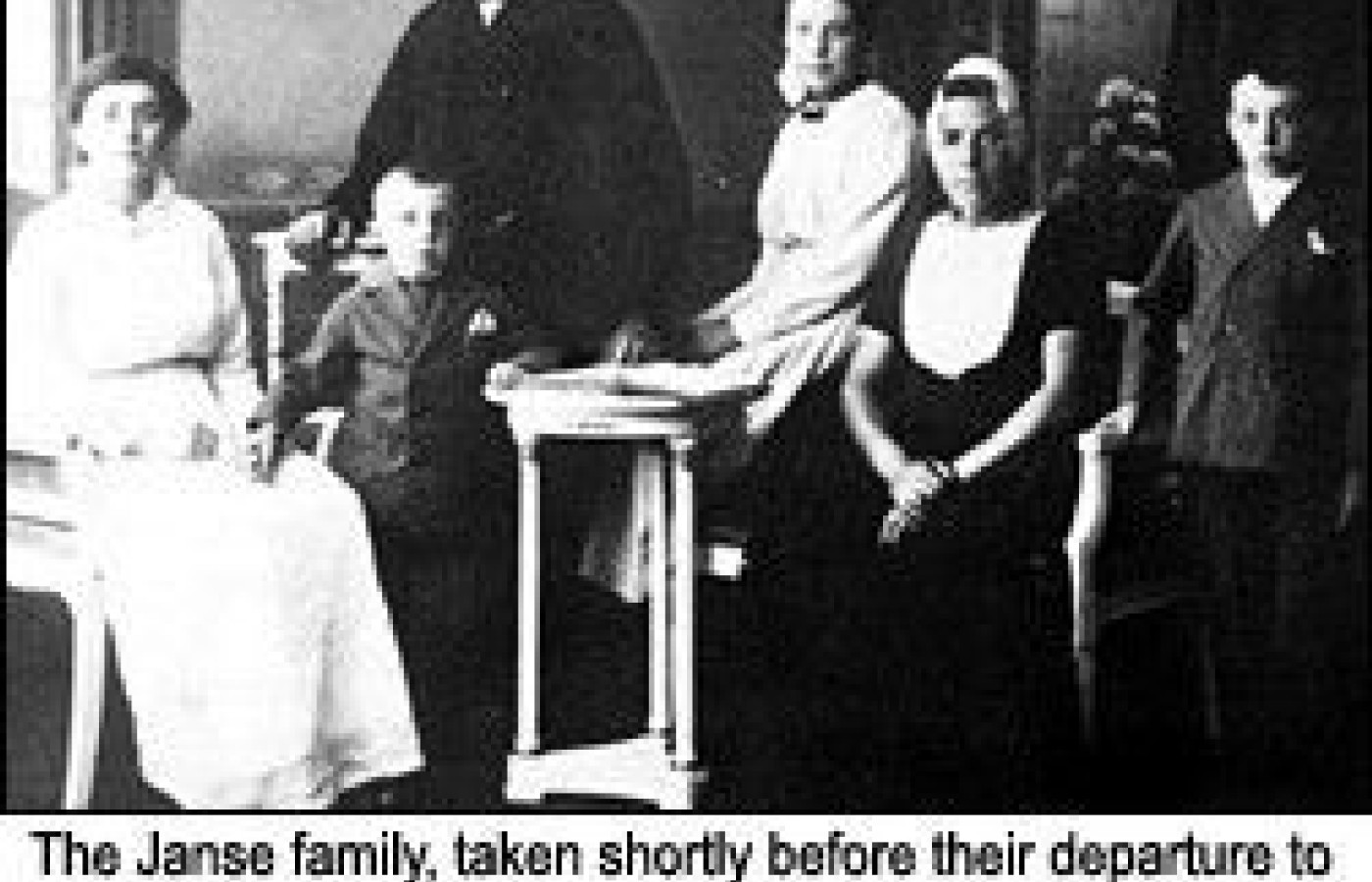Recent laws in New Jersey and California represent a disturbing trend that will negatively impact a practice’s ability to collect monies from patients, as well as expose them to significant penalties if the practice does not follow the mandatory guidelines to a T. Please be aware that a similar law may be coming to your state. The time to act is before the law is passed.
Remembering Joe Janse in Pictures: The Early Years
He's been gone for 20 years now,3,5 but is far from forgotten in the hearts and minds of many in the profession. Even those in the opposing philosophical camp came to respect his wisdom.8 Dr. Joseph Janse is recognized for a great many accomplishments. Among these were his leadership of his alma mater for nearly 40 years; his contributions to chiropractic radiology; his role in the creation of the National Board of Chiropractic Examiners;7 his service as an officer during the Council on Chiropractic Education's (CCE's) decades-long quest to improve our training institutions and establish federal accreditation;9 his defense of the profession in the historic England case in federal district court in Louisiana in the 1960s;1,4 the creation of our leading journal of science and scholarship - Journal of Manipulative and Physiological Therapeutics (JMPT); and his success in securing regional accreditation for the National College of Chiropractic in 1971, even before the CCE had been recognized by the federal government.2
I never had the pleasure of meeting Dr. Janse, but have come to know him somewhat through his prolific contributions to the literature and through the numerous images of the man which punctuated the chiropractic journals for nearly four decades. I've been impressed with his apparently self-guided evolution as a critical thinker over the course of his career, with his success in keeping his devoutly religious beliefs separate from his scientific orientation. But these are considerations for another day.
What follows is a very cursory biographical sketch of the man through the first 20 years of his presidency at the National, and some of the many photographs that illustrate his career. Wherever possible, the original captions are employed.
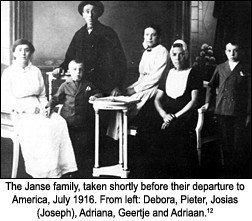
|
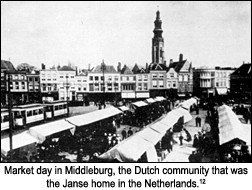
|
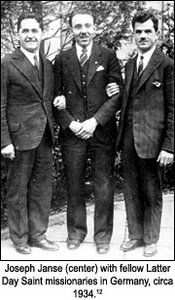
|
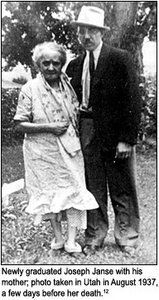
|
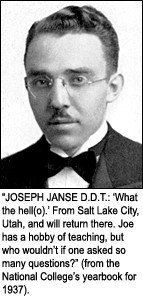
|
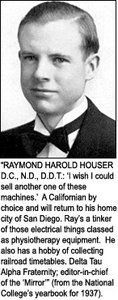
|
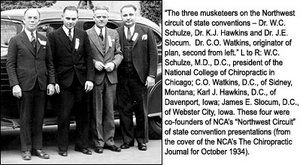
|
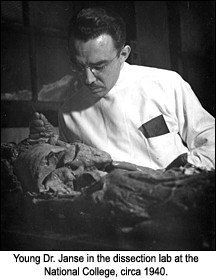
|
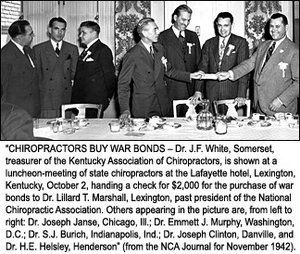
| |
| ||||||
Josiah (Joseph) Janse was the youngest child of a poor Dutch family that immigrated to the United States in 1916 in pursuit of its Mormon convictions. Following a missionary stint in Germany in the early 1930s,12 he was attracted to a career in chiropractic by the lectures of William C. Schulze, M.D., D.C., president of the National College of Chiropractic (NCC). (Dr. Schulze was part of a troupe of chiropractor-seminar presenters who toured the northwest on behalf of the National Chiropractic Association [NCA].) Janse earned his first doctoral degree - Doctor of Drugless Therapeutics (DDT) - in 1937, and the following year secured the D.C. and N.D. from the National as well. Among his classmates was Raymond Houser, D.C., N.D., who subsequently would serve as the dean of the Los Angeles College of Chiropractic (LACC).10 In short order, he was named to the faculty of the NCC (see Table 1).
Dr. Schulze had passed away while Joe was a student. Schulze was succeeded (as dean) by Omer C. Bader, D.C., N.D., whose tenure also would be brief: He passed away in 1939. For the next few years, Dr. Janse served as one of four deans (one for each year of the curriculum) who managed the college's day-to-day operations. During this time, he secured a license to practice in Illinois, which was no easy accomplishment in the "Prairie State," since the licensing authority was dominated by the medical community. By 1941, Janse had persuaded the owners of the still-proprietary NCC to convert to nonprofit status, and in 1945, young Dr. Janse was appointed president of the college, a post he would hold until 1983. Early on, he became a popular figure on the lecture circuit within chiropractic.
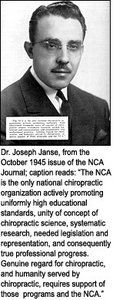
|
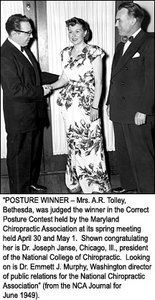
|
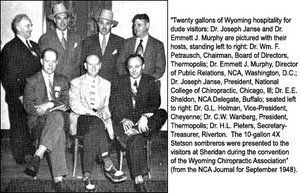
| |
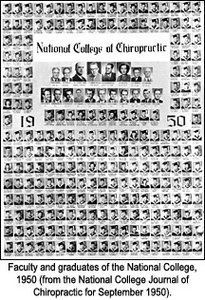
|
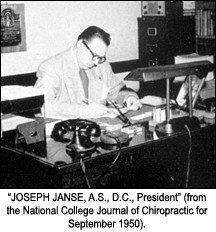
|
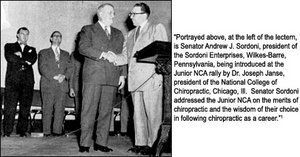
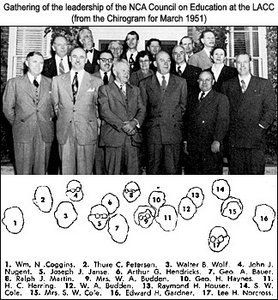
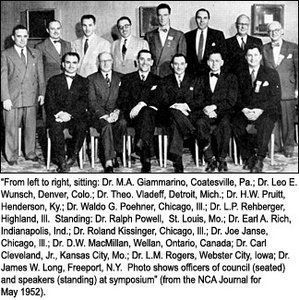

| |
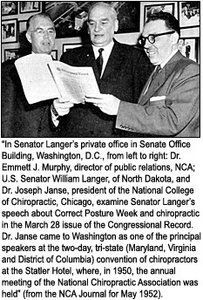
|
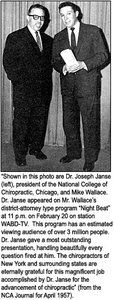
|
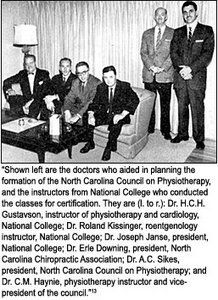
| |
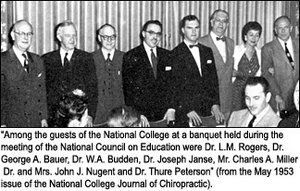
| |
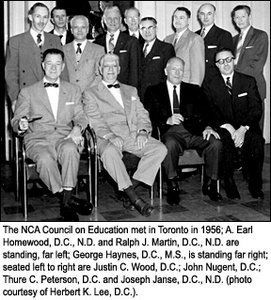
| |
Editor's note: Complete references accompany part 2 of this article, scheduled to appear in the Dec. 17, 2005 issue; the online version of part 1 features a table listing some of Dr. Janse's published papers.
